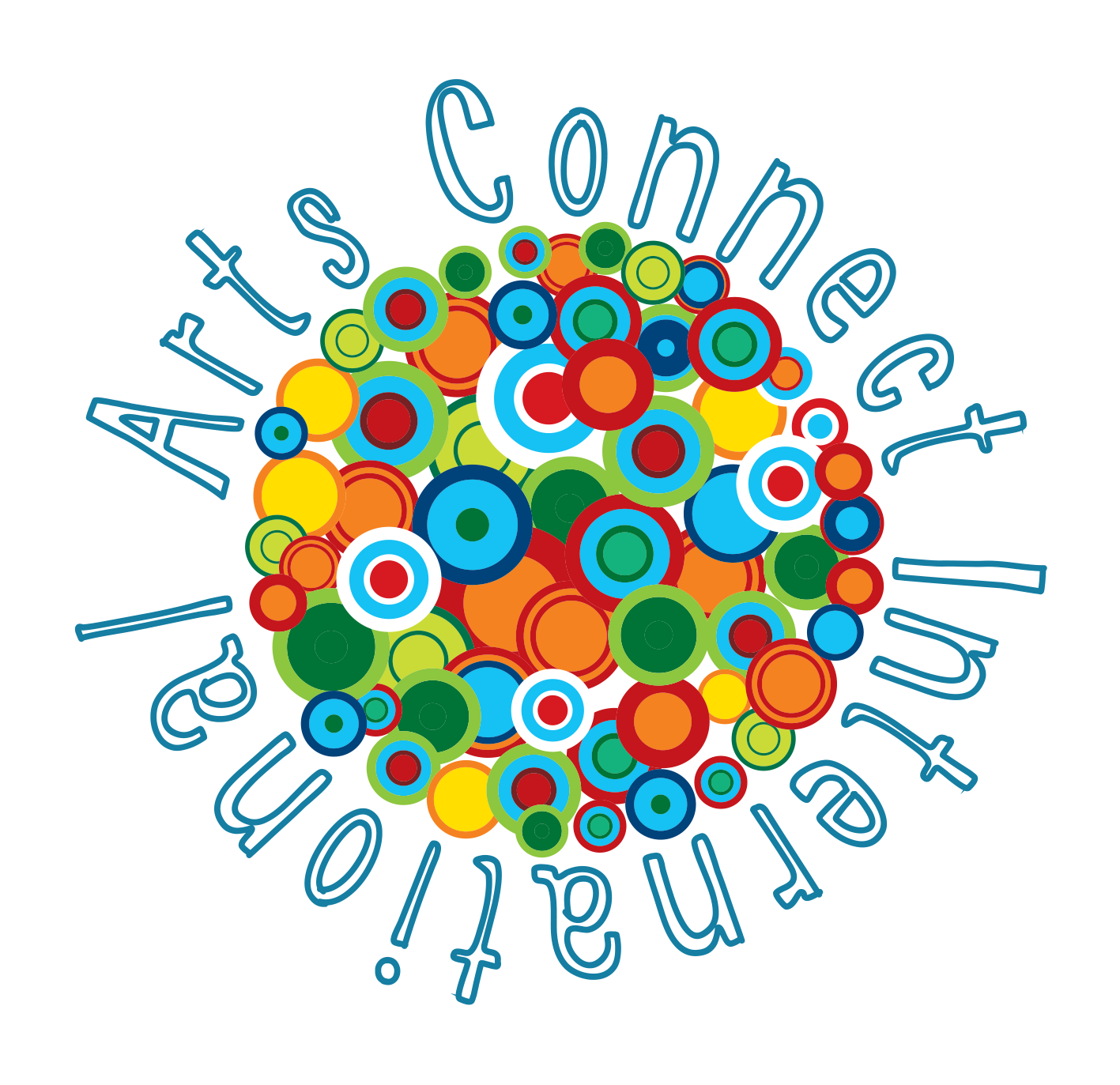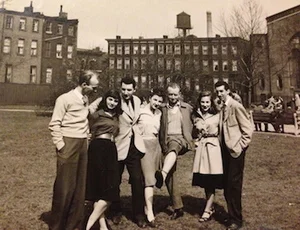7 DRESSES 4 HEALTH: Day 357 - Day 363 ~ December 23rd - December 29th ~
Guest Blogger Bio: Sarah Gelbard is a graduate of the University of Rochester. She has worked in the Friedreich Ataxia Programat the Children’s Hospital of Philadelphia, and within Philadelphia’s vibrant non-profit sector. Bookworm and insistent venturer, her curiosities lie at the intersections of public health, education, social justice, and the arts.
(Sarah Gelbard's grandmother, with friends)
Art Matters
My grandmother was an artist. For all the years that I knew her she loved her watercolors and until she died, this summer— six days before her 87th birthday— she told me often in her generously fond way that she loved to think of me writing. In the seventies, she had worked withJudy Chicago in Louisville Kentucky, sewing tampons into hammocks to be displayed sprawled out and hanging, a sort of urban centerpiece, as if to say: “We’re Women! Wonderfully, unapologetically so!”
Forty years later, I see women shyly pulling tampons from their purses, tucking them into a sleeve en route to the bathroom so as not to offend. A coworker once approached my cubicle, knelt and whispered— “Do you by any chance have a— a— tampon?” I don’t know why we must be so embarrassed by a very natural process. When next I need a tampon I won’t ask for it in a whisper. I’ll carry it to the bathroom in full view. While the tampons that my grandmother sewed so carefully decades ago may not have made life lovelier for women everywhere— it did make a statement, and it did, I’m sure, provoke some thought, some pause, for those who saw it. It mattered. My grandmother counted all sorts of expression as art— pictures, painting, costume and dress, music, poetry, and prose... Art, she knew, matters.
Consider Body Electric, our “political folk song of the year” from Alynda Lee Segerra. The artist says:
“It had been an idea in my mind for months. I was out at a club one night and I heard somebody sing a murder ballad… a song about killing his girlfriend for cheating on him… We hear the song and say… They don't really mean that, they're just singing it. That's very similar to… he didn't mean it; she made him really angry. All of those things had started to play in my mind as ways that we try to make sense of something that's basically just violent and crazy. And I just suddenly felt like it was my place to say something about it… And I was thinking about the woman in New Delhi who was killed on a public bus, and the articles in the news about young women in high school getting sexually assaulted and it gets out on the Internet. These boys are actually not thinking they're doing anything wrong, to the point where they can videotape it, put it on the Internet and not think they're going to get in trouble or that anyone would get upset about it. And suddenly, I thought, it's time for a song about bringing that back to something very simple and direct. I'm a human, when you say that, you're talking about killing me. You're talking about killing my best friend."
Her song cannot mend any violence that’s been done, cannot stitch together anything that’s already open and bleeding— but it could stifle the spread. It may inspire someone who has known violence intimately to come forward, or it might move parents to teach their sons to eschew violent language or action as thoughtfully as they would teach their daughters never to leave home without whistles affixed to their key chains, never to walk alone at night. To say that misogyny, that violence and rage are immutable parts of human nature would be far too lazy. If we have cultivated a culture in which sexual assault is permissible and violence an unfortunate norm, surely we can change it. Change moves through ideas. Art sees that ideas are shared with everyone.
A friend has recently moved to Baltimore and has amassed hundreds of followers for an interactive art project. Baltimore is a city known for relative unrest, but here he displays it as he sees it— a place of great beauty. He shares beautiful photographs daily, encouraging followers to offer their own submissions. Imagine how much kinder the world might be, how much kinder we might be, if we could see our surroundings— and ourselves— as beautiful?
My parents are both physicians. They understand a great deal about how people live, and that is their service: seeing that people live. I have wished for art to be so powerful— for stunning prose to fool cancer, for music to delay death, for a poem to halt the course of Friedreich’s ataxia and then for a painting to reverse the damage. I know that art in all its forms cannot do these things, but I still believe in its power. Artists reveal much for us about why people live, and their service— imagination, connection, understanding, justice, joy, and wonder in a beautifully storied universe— is no less vital.
Art matters. I learned a lot about how much art matters as a kid, when recovering from a series of major orthopedic surgeries I was bedridden for a long while, full with restlessness and sluggish gloom— mostly unmoving, save to pause a film or turn the pages of a book. Stories carried me, absolutely. ACI knows how art matters— it demands inclusion, and it is where Sara lives. My grandmother knew how art matters, and I hope that you might know it too.
About 7 Dresses 4 Health (7D4H): 7D4H is a year-long arts and health education campaign lead by visual artist, Marian Brown, in conjunction with Arts Connect International. The objective of the campaign is to promote inclusive community practices through adDRESSing health artistically and collaboratively. To learn more about the genesis of the project, read Marian’s New Year Blog.
About this week's look & location: All of the dresses for 7 Dresses 4 Health were designed and sewn by Kim's Fashion Design. Love the look? Visit Kim at 100 Huntington Ave, Boston MA 02116, call her at (617) 267-9299 or email her: info@kimsfashion.com. Mention 7 Dresses 4 Health for a special discount!
Campaign Update (2017): All 7 Dresses 4 Health blogs were migrated from a former site, so the sharing analytics are inconsistent from when they were first published. We apologize to our guest bloggers, and readers, for this inconvenience. That said, the campaign garnered an average of 5K hits per blog, over 500,000 readers throughout 2015! Additionally, the average number of shares per guest blog was over 150x on social media (through Facebook and Twitter). Thank you for making this incredible campaign possible - and for all that it was for so many. With gratitude, Marian & the ACI Team




